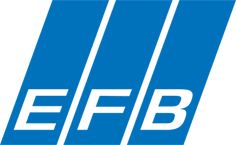Objectives
The innovative contribution of the intended research project is the development of new high performer's inverse hybrid composite, consisting of a continuous fibre reinforced thermoplastic matrix, in which a metal insert will be integrated. Besides the improvement of crash performance, the metallic insert is to be additionally used for the effective connection of the composite to the adjacent metallic structures.
For the efficient manufacturing of the novel composite in high-volume applications, conventional sheet metal forming methods shall be used. Due to the application of established technologies, high investment costs at the SMEs were avoided and the entry barrier for the use of composite materials is lowered. The project approach has a great economic and industrial importance for SMEs in terms of weight and load equitable production of highly complex components and structures.
Multi-material solutions can offer significant weight advantages in mobile applications, compared to classical metallic constructions. In consequence this is leading to significant energy savings and the reduction
of CO2-emissions.
The project aims to consider the following main topics:
- Load optimized inverse composite design
- Efficient manufacturing methods
- Simplified modular crash testing bench
Work Packages
Reference cases will guide developments towards industrial adoptable results that create application opportunities for innovative composites using the load optimized inverse composite technology. The cases performed at development partners and in the application labs in collaboration with the user committee will gradually increase in complexity according to the challenges.
This approach does provide developers with the industrial relevant challenges and allows members of the user committee to experiment and validate the technology on relevant cases in an early stage.
The work packages are structured around the above identified industrial challenges at SMEs. Industrial cases representative for applications in the target groups guide the developments and technology transfer.
Work package 0
This WP (work package) provides for professional project management between partners, the interaction with the user group and the elaboration/execution of the dissemination and valorisation strategy.
Work package 1
WP1 will select generic industrial reference cases in coordination with the user committee that are representative for the industrial needs from the target groups. Determination of all the boundary conditions and specifications for the development of the innovative hybrid composite, the test procedures in relation to the application case. The result of this work package is used as input for the subsequent WP2-WP6.
Work package 2
WP2 is focused on the specific material selection of the single components concerning mechanical, thermal and production-oriented aspects based on the requirements determined in WP1. This includes also the definition of the interfaces and pre-treatment technologies. Afterwards the mechanical and thermal characterization of the single components and hybrid specimens in laboratory scale (provided from WP3) will be performed. For improvement of the bonding strength investigations about different kind of surface modifications will be performed. The outputs (material and composite properties) of this WP will be used as input for the WP3-5.
Work package 3
WP3 deals with determination of the process window for the manufacturing of the hybrid composites. With the use of a flat deep edge mould in laboratory scale the parameters pressure, temperature and time can be varied and for the consolidation of different layer designs. The major aim of this WP is to find an optimum in the manufacturing parameters and to shorten the process time. In parallel different concepts for manufacturing process chains will be developed. At the end of this WP the results from the basic studies shall be transferred to the manufacturing of a simplified 3D-geometry (e.g. hat profile). The developments of this WP are the basis for the tool design and the manufacturing of the demonstrator in WP6.
Work package 4
WP4 will have as main objective the development of an innovative modular dynamic testing rig. With the input from WP1 and test specimen from WP3 and WP6 dynamic testing depending on the load scenario (e.g. high speed tensile tests, falling dart, compression after Impact) will be performed for determination of the crash performance of the novel composite. As benchmark the monolithic reference case is used. The results of this WP are the basis for the load optimized design of the composite with the use of FE-Simulation in WP5.
Work package 5
WP5 consolidate the results of the research through significant application cases (PoC). Those cases will be chosen to cover the largest sectors of activity and will be selected by growing complexity. The proposed approach will be based on the following tasks: CAE for the part/tool design and prediction of the system performances, tool design and manufacturing
Work package 6
WP6 is focused on the proof of concept processing and evaluation of the part performances. Within this WP the different manufacturing process variants developed in WP 3 will be practically investigated an assessed in view of feasibility und resource efficiency. The Assesment of composite quality (delaminations, air pockets, fiber shifting) will be will be performed by the use if macro and microscopic investigation methods.
Work package 7
WP7 validates the developments and the potential of the new developed process chain und composite structure in close collaboration with members of the user committee. The achieved knowledge will be transferred to guidelines and strategies.

